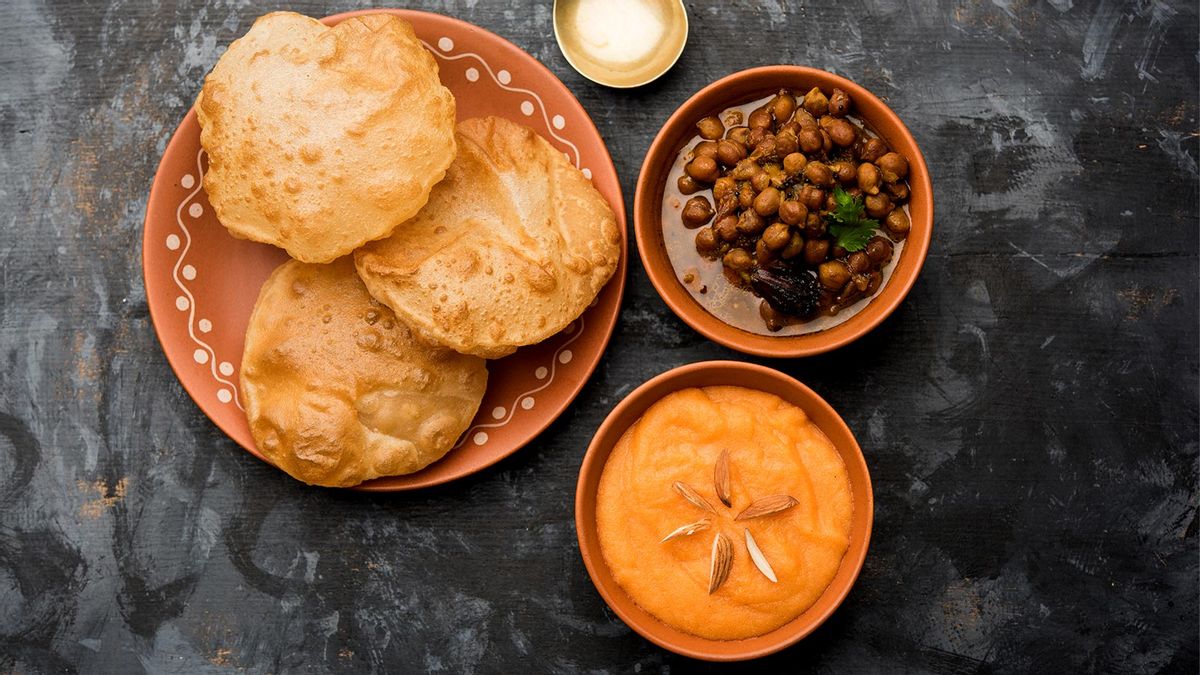The festival of Navratri is as much about food as it is about rituals and revelry. And every part of the country has a distinct feast for worshipping the goddesses. Of all these feasts, kanjak/kumari puja prasad (offering) has been my most favourite. It brings back fond memories of a childhood that was.
Memories for a lifetime
On the eighth day of Navratri, devotees across Uttar Pradesh, Punjab, and parts of Rajasthan break their fast by hosting nine girls, who are believed to be a manifestation of the nine forms of goddess Durga, for lunch. They are treated to piping hot halwa, fluffy puris, and black chickpea sabzi and sent away with some gifts. As part of the process, the devout hosts observing the fast wash the feet of their nine young guests and tie a sacred thread around their wrists.
Growing up, my girlfriends and I would diligently spend Ashtami, and sometimes, Navami too, visiting houses in the neighbourhood for kumari puja. Our feasting spree would end only by late afternoon and we’d return home with stuffed bellies, big smiles on our faces, and a bag full of inexpensive tokens and some money.
According to Pt. Sitlaprasad, a Mumbai-based priest, the tradition of worshipping little girls symbolises the feminine power vested in a girl child. Each of the nine girls invited for the puja is considered as an embodiment of Goddess Durga. In fact, the nine-day festival of Navratri is dedicated to the nine incarnations of this goddess: Shailaputri, Brahmacharini, Chandraghanta, Kushmanda, Skandamata, Katyayani, Kaalratri, Mahagauri, and Siddhidhatri.
The big battle
Just like most Indian festivals, there are a few legends associated with Kanjak puja. A popular one has it that it comes from the great battle between the powerful demon king, Mahishasura, and goddess Durga. Mahishasura was blessed with immortality by Lord Brahma, but the caveat was that only a woman could defeat him.
Delirious with his newfound power, Mahishasura attacked all the three lands of heaven, earth and hell. The holy trinity of Hindu mythology – Brahma, Vishnu, and Shiva – then created goddess Durga to defeat the demon king. It is said, she fought with him for nine days and on the tenth day beheaded Mahishasura.
Several sacred Hindu books say that children are the purest form of human beings with no evil emotions. Hence, Kumari puja is symbolic of this nine-day battle and Dassehra, the victory of good over evil.
Now that you’ve got a background on the legends and traditions associated with the eighth day of Navratri, learn how to make the black chickpea sabzi aka kala chana sabzi at home.
Ashtami Kala Chana Sabzi Recipe
Ingredients
- 250 grams black chickpeas, soaked overnight
- 1 tsp cumin seeds
- 1 tsp turmeric powder
- 1 tbsp coriander powder
- 1½ tsp red chilli powder
- 1½ tsp dry mango powder
- Cooking oil
- Salt, as per taste
Method
- Begin with pressure cooking the chickpeas with salt and half of the turmeric powder.
- Cook the chickpeas on medium heat and ensure that there’s some stock left in it.
- In another pan, heat oil in a pan and add cumin seeds, red chilli powder, coriander powder, dry mango powder, and the remaining turmeric powder.
- Once the spices are cooked, add the chickpeas and mix well.
- Add the stock and mix again. Let the chickpeas cook until the stock dries.
Your kala chana sabzi is ready to serve.


